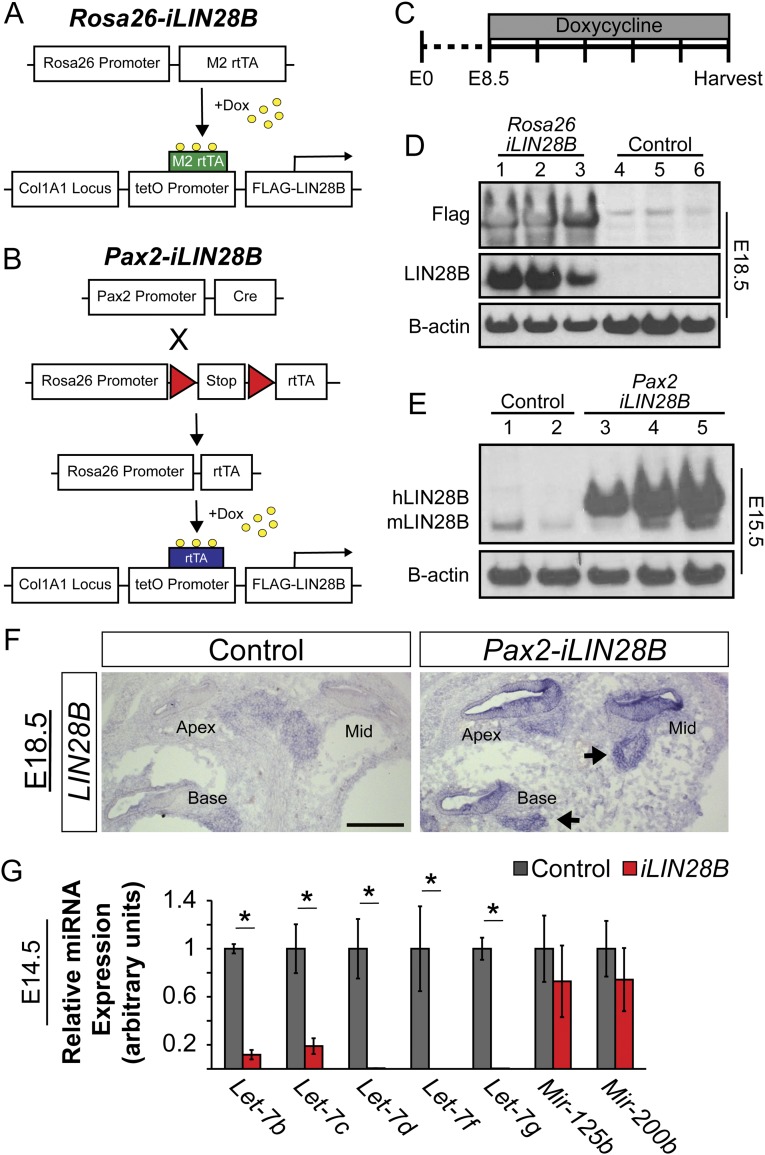Fig. S2.
LIN28B overexpression in the embryonic cochlea. (A) The iLIN28B transgene, containing flag-tagged human LIN28B ORF driven by the tetracycline inducible promoter, and the M2 reverse tetracycline transactivator (rtTA) transgene under control of the ubiquitously expressed Rosa26 promoter, were combined to drive global LIN28B expression (Rosa26-iLIN28B). (B) Inner ear-specific overexpression of LIN28B was achieved by using a trigenic approach. This rtTA line contained a floxed stop cassette between the Rosa26 promoter and the rtTA. Crossing in Pax2-driven CRE recombinase confined LIN28B overexpression to the Pax2+ cells of the cochlear epithelium and spiral ganglion (Pax2-iLIN28B). (C) To induce iLIN28B overexpression, time-mated females were given ad libitum access to feed containing 2 g of dox per kg of feed beginning at E8.5. Dox treatment was continued until embryos were harvested. Unless otherwise stated, iLIN28B was always induced at E8.5. (D) Dox administration resulted in robust flag-tagged LIN28B protein overexpression within differentiated (E18) Rosa26-iLIN28B (iLIN28B tg/+; Rosa26 M2-rtTA tg/+) inner ears but not nontransgenic littermate controls (Rosa26 M2-rtTA tg/+). (E) Dox administration resulted in human LIN28B overexpression within differentiating (E15.5) Pax2-iLIN28B (Pax2-Cre tg/+; rtTA tg/+; iLIN28B tg/+) cochlear epithelia but not nontransgenic littermate controls (Pax2-Cre tg/+; rtTA tg/+). Endogenous mouse Lin28b protein expression was seen in both transgenic and nontransgenic epithelia. (F) ISH based analysis of LIN28B expression in E18.5 control and Pax2-iLIN28B cochleae. Arrow points to LIN28B expression within the spiral ganglion. (Scale bar: 100 μm.) (G) RT-qPCR analysis of mature let-7 miRNA expression in E14.5 control (gray) and Pax2-iLIN28B (red) cochlear epithelia. Data are mean ± SEM (n = 3–5, *P < 0.05).

